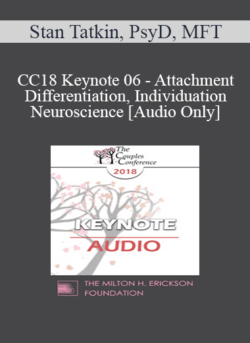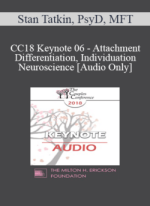[Instant Download] – Immediately deliver the download link after receiving the paymentPurchase [Audio] CC18 Keynote 06 – Attachment, Differentiation, Individuation, and Neuroscience: Low Complexity Partners in Couples Therapy – Stan Tatkin, PsyD, MFT courses at here with PRICE $15 $5Topic Areas:Attachment | Neuroscience | KeynoteCategory:Couples Conference | Couples Conference 2018 | Online Continuing EducationFaculty:Stan Tatkin, PsyD, MFTDuration:50:59Format:Audio OnlyOriginal Program Date :May 06, 2018CC18 Keynote 06 – Attachment, Differentiation, Individuation, and Neuroscience: Low Complexity Partners in Couples Therapy – Stan Tatkin, PsyD, MFT:The early 1950s brought us John Bowlby’s work on infant attachment, mirrored by Harry Harlow’s primate attachment studies on rhesus monkeys. The 50s and 60s saw the advent of Murray Bowen’s groundbreaking work on differentiation. The 1970s brought us further with Margaret Mahler’s work on separation/individuation and the psychological birth of the human infant. Today, clinicians and researchers alike attempt to validate the developmental theories of Bowlby, Bowen, and Mahler through the modern lens of neuroscience. So what is the current clinical usefulness of these developmental models against the backdrop of developmental neuroscience? This presentation seeks to take up these seemingly kindred ideas and consolidate them through a perspective of psychology. Particular focus will be on low-complexity, normative partner examples versus extreme partner examples in couple therapy. Educational Objectives:Describe at least three insecure attachment behaviors that can be explained using models of Bowen, Mahler, and developmental neuroscience.Differentiate personality disorders from non-pathological lower-complexity exhibitions of poor differentiation, individuation, and insecure attachment, using at least three criteria.Describe at least three interventions with individuals exhibiting low-complexity features of poor differentiation, separation, individuation and insecure attachment.*Sessions may be edited for content and to preserve confidentiality*
 CC18 Law & Ethics 01 – Really Hard Work: Legal and Ethical Issues in Couples and Family Therapy (Part 01) – Steven Frankel, PhD, JD
₹1,328.00
CC18 Law & Ethics 01 – Really Hard Work: Legal and Ethical Issues in Couples and Family Therapy (Part 01) – Steven Frankel, PhD, JD
₹1,328.00
 CC18 Keynote 04 – Working with Difficult Men: How to Engage, Understand, and Transform Male Clients – Terry Real, LICSW
₹1,328.00
CC18 Keynote 04 – Working with Difficult Men: How to Engage, Understand, and Transform Male Clients – Terry Real, LICSW
₹1,328.00
[Audio] CC18 Keynote 06 – Attachment, Differentiation, Individuation, and Neuroscience: Low Complexity Partners in Couples Therapy – Stan Tatkin, PsyD, MFT
₹830.00






